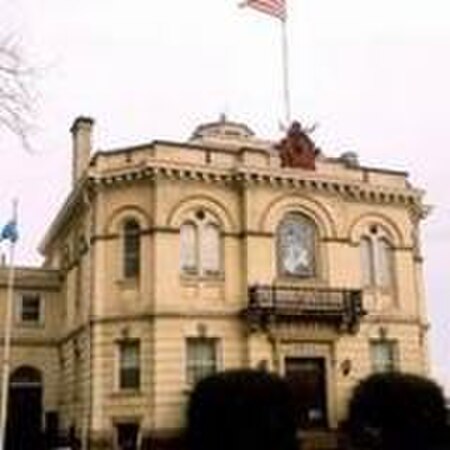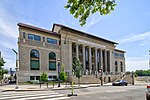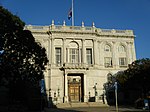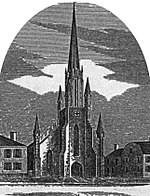B.P.O. Elks Lodge (Hartford, Connecticut)
Buildings and structures completed in 1903Buildings and structures in Hartford, ConnecticutClubhouses in ConnecticutElks buildingsNational Register of Historic Places in Hartford, Connecticut ... and 1 more
Neoclassical architecture in Connecticut

The B.P.O. Elks Lodge is a historic fraternal lodge building at 34 Prospect Street in Hartford, Connecticut. It is a Classical Revival architecture building designed by John J. Dwyer, and built in 1903 for the local chapter of the Benevolent and Protective Order of Elks. The building was listed on the National Register of Historic Places in 1984 for its architecture.
Excerpt from the Wikipedia article B.P.O. Elks Lodge (Hartford, Connecticut) (License: CC BY-SA 3.0, Authors, Images).B.P.O. Elks Lodge (Hartford, Connecticut)
Prospect Street, Hartford Downtown Hartford
Geographical coordinates (GPS) Address External links Nearby Places Show on map
Geographical coordinates (GPS)
| Latitude | Longitude |
|---|---|
| N 41.763611111111 ° | E -72.672222222222 ° |
Address
Elks Lodge
Prospect Street 34
06103 Hartford, Downtown Hartford
Connecticut, United States
Open on Google Maps










